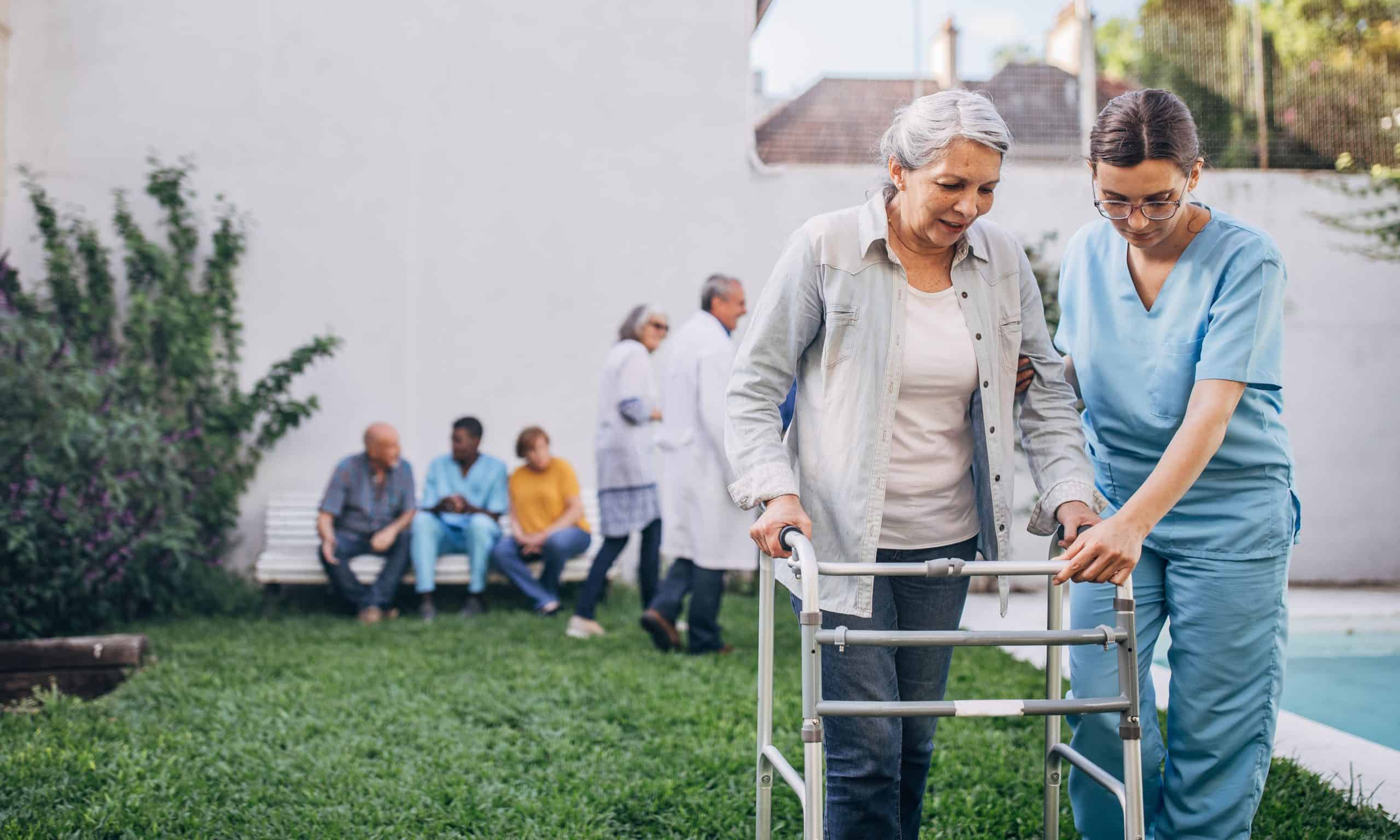It is estimated that nearly half of all traumatic brain injuries, or TBIs, are the result of a fall. As there are around 36 million falls sustained by seniors each year, this is a startling statistic. Many seniors do not immediately recognize that they have been hurt, declining medical care, and suffering health consequences later. In fact, around 32,000 seniors die from fall-related injuries.
If you are a senior, falls present a significant risk. It is estimated that seniors endure around 36 million falls each year and 32,000 of these incidents are fatal. There are other kinds of serious injuries sustained from falls, however, including traumatic brain injury, or TBI.
If you or someone you care about has sustained an injury in a fall, observe Brain Injury Awareness Month and lend your experiences, perspective, and voice to this important event. Also, if you have physical limitations or challenges, lower your risk of a nasty fall with quality mobility aids.
Traumatic Brain Injury (TBI)
Around 2.8 million people are treated for traumatic brain injury each year in the US. So, what causes TBIs? Falls, assault, and traffic accidents top the list but also, trauma from being struck by something also can precipitate a traumatic brain injury.
It is estimated that falls account for around 1,320,000 of these brain injuries, some leading to long-lasting brain damage. If you hear of someone being hurt and getting a concussion, that is also a type of TBI. In fact, Concussions are the most common form of traumatic brain injury.
Fall Risk and Prevention
Accidental falls occur non-stop, and it is reported that each second, a senior sustains a fall in this country. Falls are the prime cause of injury and accidental fatality for this demographic. Experts warn that one out of four seniors will fall down this year, presenting a significant threat to the health and independence of this age group.
There are some contributing factors that increase the potential for taking a fall. Some of these fall risks include:
- Muscle weakness, especially in the lower body, legs, etc.
- Lack of vitamin D
- Coordination or balance difficulty
- Medications, both over-the-counter and prescribed, particularly sedatives, tranquilizers, pain relievers, and antidepressants
- Vision impairment or blindness
- Mobility issues or physical limitations
- Pain in the feet or toes, including conditions like Gout
- Loose, poorly fastened, untied, or slippery footwear
- Clutter, mess, or debris in the home environment
- Pets in the home, like dogs or cats, that could cause you to trip
- Uneven stairs, broken steps, steep risers, or other stair issues
- Loose rugs, torn carpeting, or peeling tile flooring
- Any combination of these risks and home hazards
Fortunately, there are some precautions that seniors and their loved ones can take to help reduce the likelihood of taking a nasty fall at home and potentially avoiding a TBI. Some things you can do to lower your risk of a fall include:
- Talk with your doctor, practitioner, or provider about a fall-risk assessment to determine what your risk factors are, as well as how to lower the likelihood of a fall.
- Have your pharmacist or provider evaluate your current medication regimen to assess if they could be increasing your fall risks.
- Supplement your diet with vitamin D but talk to your doctor about such changes first.
- Work on improving lower body strength, like tai-chi and walking. This can also help improve coordination and balance with consistency.
- Make sure that you have annual- or twice-annual- eye exams to detect any changes or impairments in your vision.
- Update eyeglass prescriptions, as needed.
- Remove tripping hazards or clutter from the home environment. Make sure that you leave a clear berth through the living areas of the home for easy access and reduced risk of a fall.
- Install railings on steps, stairs, and landings; install grab bars throughout the home, including near stairways, doors, the toilet, and sinks, for stability.
- Watch what you wear, and avoid long, drapey, or loose clothing that could cause you to trip and fall.
- Illuminate the home adequately by adding more lamps and light fixtures, but also by changing out light bulbs to a higher wattage, brighter LED ones.
- Invest in a reaching tool to prevent falls when trying to access items that are overhead or tucked away. A step stool can help but buy one that has a railing for safety and stability during use.
- Prevent bathroom falls with non-slip mats in your tub and in the shower. Bathrooms are inherently the most slippery spaces in the home.
- Find out more about mobility aids and address physical challenges or limitations to reduce your own fall risk and the chance of a related injury.
Would you benefit from mobility aids or devices? Talk to the team at Pacific Mobility; they have been providing their clients and customers with quality mobility equipment for generations. Improve accessibility while you lower your risk of a fall and subsequent brain injury with mobility aids- call or visit to learn more.
President, Husband, Father, Grandfather Graduate of UC Davis- Bio Sci Major- Go Aggies! Jeff has extensive experience in all of Pacific Mobility’s products and services, and specializes in accessibility products as well as stairlifts, ceiling lifts and custom wheel chairs. His hobbies include spending time with family, gardening, mountain biking, exercising and off road motorcycle riding.
24 years as Owner/President of Pacific Mobility Center – selling, installing, and servicing stairlifts, porch lifts, ceiling lifts, pool lifts, handicap ramping, specialty wheelchairs, scooters, power wheel chairs, and other power mobility devices
Certified Environmental Access Consultant since 2008
Licensed General Contractor since 1998
Certified Aging in Place Specialist since 2016
Board Member for Home Access Professionals
Member of Association of Members of the Accessibility Equipment Industry (AEMA)




